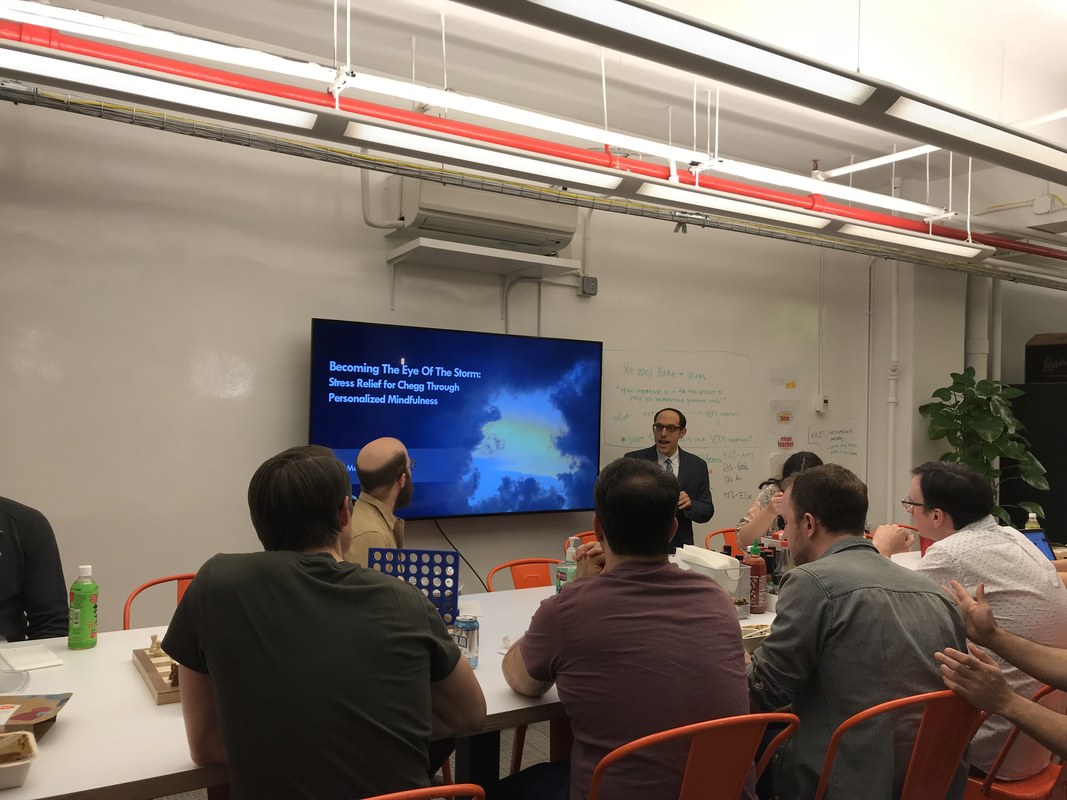|
Looking for easy (and fun!) ways to reduce burnout and boost happiness? Start a personalized mindfulness practice today. It only takes a few minutes and the benefits last a lifetime. We are honored to have our methodology published in ASCD! See below: Mindfulness involves easing into the present moment and choosing to respond to whatever arises with as much compassion as possible. Mindfulness is a process—and it takes practice. But it's worth it. The more tuned into the present we are, the richer our lives become.
Personalized learning both jumpstarts and revitalizes mindfulness practices for adults and children alike. Personalized mindfulness offers the freedom to choose how we want to return to the present whenever our awareness wanders off into the past or the future. We are often told to count our breaths, watch thoughts float by like clouds, or perform some variation of these exercises to become more mindful. And this works for some people. Yet kids (and easily bored adults like me) often find such one-size-fits-all imagery mismatched with our unique preferences and learning styles. As a result, we may find a thousand excuses to do something else—anything else—but mindfulness practices. Considering these hurdles, I've developed and use the following seven easy steps when conducting personalized mindfulness sessions. These steps have made mindfulness practices relevant to hundreds of administrators, teachers, parents, and students—all while harnessing their intrinsic motivation. Step 1: Allow Participants to Voice Their Stress My clients—students, educators, parents—often carry their stress around like heavy weights strapped to their minds and bodies. After all, administrators are responsible for the optimal performance of hundreds of students and teachers, while also balancing budget constraints and other logistics. Teachers must manage increasing numbers of students, a diversity of learning styles, and behavioral issues along with endless assessments and professional evaluations. For their part, parents must constantly juggle the stresses of work and home life. Students, meanwhile, must navigate their rapidly changing bodies, academic and extracurricular expectations, demanding adults, and social anxiety. Whew. Many people don't always name the stress that bogs them down. Yet, as we'll see in the steps that follow, owning stress is the first personalized mindful step toward disowning it. Step 2: Understand How Stress Relates to Mindfulness The great news is we are not our stress. We are far more than it. There is a gap between stress and our response to it. Within that gap is where personalized mindfulness comes in to play. Mindfulness helps us slow down our responses to stress by exploiting that gap. By slowing down, we are better able to take perspective and see a range of options for how we can respond to stress, rather than constantly pivoting between fight or flight. Although chronic stress can shut us down, mindfulness creates a path that opens us back up. Step 3: Appreciate the Multiple Benefits of Mindfulness The benefits of mindfulness are as diverse as those who practice it. Overall, these benefits can address many of the stresses that were voiced in the first step. Some common ones include the following:
Step 4: Take a Brief Self-Inventory Personalized mindfulness is based on a concept called "skillful means," or using our abilities and interests to redirect to the present with a nonjudgmental attitude. To gauge which skillful means might work best at guiding our personal path to mindfulness, first take a brief survey like the following:
Step 5: Look for a Main Pattern With these self-inventories, I encourage people to look for a pattern. For example, many of my self-assessment responses can be traced to sound: One of the things I do for fun is attend live music events, a genuine interest of mine is piano playing, and, to top it all off, my optimal learning style is musical in nature. These patterns provide the clues that will lead you to your own sources of mindful reflection. Step 6: Choosing Our Own Paths to Mindfulness I encourage administrators, teachers, parents, and students to uncover the unique means toward mindfulness that works best for them. Practically any life-giving sensation or activity—from mindful eating to dancing—can bring you back to the moment. Experiment with various methods. This individualized mindfulness method has instilled an intrinsic motivation to meditate—and not just during designated meditation times. I find mindfulness spilling over into all aspects of my life. When I'm stressing, the sound of a passing car might gently guide me back to the present where I can find some refuge. Step 7: Revel in Your Personalized Approach Schedule at least 20 minutes a day when you use your unique means to stay as present as possible. These 20 minutes need not be consecutive. In fact, I often focus on the sounds of a different five-minute song at four varying times throughout the day. Closing Thoughts Mindfulness is too beneficial to discount as another annoying thing on our busy to-do lists. Through these seven steps, we can harness the power of personalization to become more mindful. As a result, we just might begin to practice mindfulness not because we have to, but because we want to. Nick Mosca holds a Master's degree from Harvard University, where he studied mindfulness and won the Billings Prize for inspiring behavioral change through positive humor. He is an avid speaker and writer whose approach to mindfulness has been featured in The Atlantic and Psychology Today, as well as at WABC radio, Yale University, Squarespace, New York University, the Milken Scholars Program, mindSpark Learning, the HealthCare Chaplaincy Network, and the George Jackson Academy. For more information about boosting resilience in your school through the power of personalized mindfulness, please visit http://www.personalizedmindfulness.com/education.html What an honor to share personalized, effective stress-reduction strategies with Chegg's staff. It was truly a welcoming and engaging environment. These are practices for a lifetime. As one recipient noted, "my conception of mindfulness has totally expanded...thank you!"
|
personalizedmindfulness.com/contact
© Personalized Mindfulness, Inc.
All Rights Reserved.
© Personalized Mindfulness, Inc.
All Rights Reserved.



 RSS Feed
RSS Feed